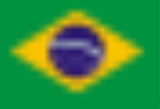
Brasiléia
Encyclopedia
Brasiléia is a Brazilian municipality located in the southern state of Acre. Its population in 2007 was estimated at 20,238 inhabitants. Its area is 336.189 km ² 4 (4.66 m / km ²).
Located 237 km south of White River on the border with Bolivia, has its limits with the municipalities Epitaciolândia, Brazil Assisi, and Sena Madureira Xapuri.
Although established as a free trade area, it is still not regulated. Currently, it is recorded heavy dependence on trade with the neighboring municipality of Cobija Bolivia, contrary to what happened in decades past, when the fact was the reverse.
Posteriormante in 1943, the town's name was changed, not to be confused with the new federal capital. Ma received a new name, derived from the union of words Brazil (Bras) and Hiléia (forest), used today.
In 1992 the town had divided its area, the entire area and population located on the right bank of the Rio Acre, originated the city of Epitaciolândia.
Services:60,5%
agricultural:12,8%
Industry:7,6%
The city's economy has suffered a great loss, lack of supervision and low prices Bolivia compared with those of Brazil, and not just consumers who are turning the Bolivian economy, but entrepreneurs to free trade zone of Cobija ( the departmental capital of Pando province and Nicolás Suárez). Every day, new shops and businesses are built by Brazilians living in the neighboring towns of Epitaciolândia, Brazil and even those who reside in Rio Branco, is investing in the countries of Bolivia. The unprotected border of both countries is also moving to drug trafficking, weapons, fuel and goods.
Economic activities are virtually paralyzed, its agriculture is traditional, industry gives signs of slow recovery, with the installation of a beneficiary of milk, which will supply markets as Epitaciolândia and Cobija (Bolivia), some sawmills and furniture factories, in the service sector are completely paralyzed. Cattle ranching has a considerable effective, especially for beef cattle. There is great potential for ecotourism, it just needs wider dissemination of their potential.
Currently the city of Brazil does not have an infrastructure of hotels and restaurants able to cater to the influx of tourists who shop in the zone of Cobija, especially on weekends.
Located 237 km south of White River on the border with Bolivia, has its limits with the municipalities Epitaciolândia, Brazil Assisi, and Sena Madureira Xapuri.
Although established as a free trade area, it is still not regulated. Currently, it is recorded heavy dependence on trade with the neighboring municipality of Cobija Bolivia, contrary to what happened in decades past, when the fact was the reverse.
History
Brasiléia originated from a small strip of land from an old rubber plantation Carmen, on July 3, 1910, using the name of Brasilia.Posteriormante in 1943, the town's name was changed, not to be confused with the new federal capital. Ma received a new name, derived from the union of words Brazil (Bras) and Hiléia (forest), used today.
In 1992 the town had divided its area, the entire area and population located on the right bank of the Rio Acre, originated the city of Epitaciolândia.
geography
It is drained by rivers and Xapuri Acre. With the first borders the neighboring Republic of Bolivia. In the early decades of this century lived the highlight of extractive exploitation of Brazil nuts and rubber, which were transported by the river Acre via cargo ships known as "boring. " Today this kind of transport disappeared, giving way to road transport by highway BR-317 linking the state capital, Rio Branco, fully paved, being in its main access route.Population
The county ranks sixth in population, with 20,237 inhabitants at the rate of 64.22% urban, 12 243 inhabitants and 35.78% rural, 6,822 inhabitants. And of these, 1,060 are ribeirnhos, communities living along the river Acre.Economy
Composition economies of Brazil:Services:60,5%
agricultural:12,8%
Industry:7,6%
The city's economy has suffered a great loss, lack of supervision and low prices Bolivia compared with those of Brazil, and not just consumers who are turning the Bolivian economy, but entrepreneurs to free trade zone of Cobija ( the departmental capital of Pando province and Nicolás Suárez). Every day, new shops and businesses are built by Brazilians living in the neighboring towns of Epitaciolândia, Brazil and even those who reside in Rio Branco, is investing in the countries of Bolivia. The unprotected border of both countries is also moving to drug trafficking, weapons, fuel and goods.
Economic activities are virtually paralyzed, its agriculture is traditional, industry gives signs of slow recovery, with the installation of a beneficiary of milk, which will supply markets as Epitaciolândia and Cobija (Bolivia), some sawmills and furniture factories, in the service sector are completely paralyzed. Cattle ranching has a considerable effective, especially for beef cattle. There is great potential for ecotourism, it just needs wider dissemination of their potential.
Currently the city of Brazil does not have an infrastructure of hotels and restaurants able to cater to the influx of tourists who shop in the zone of Cobija, especially on weekends.

